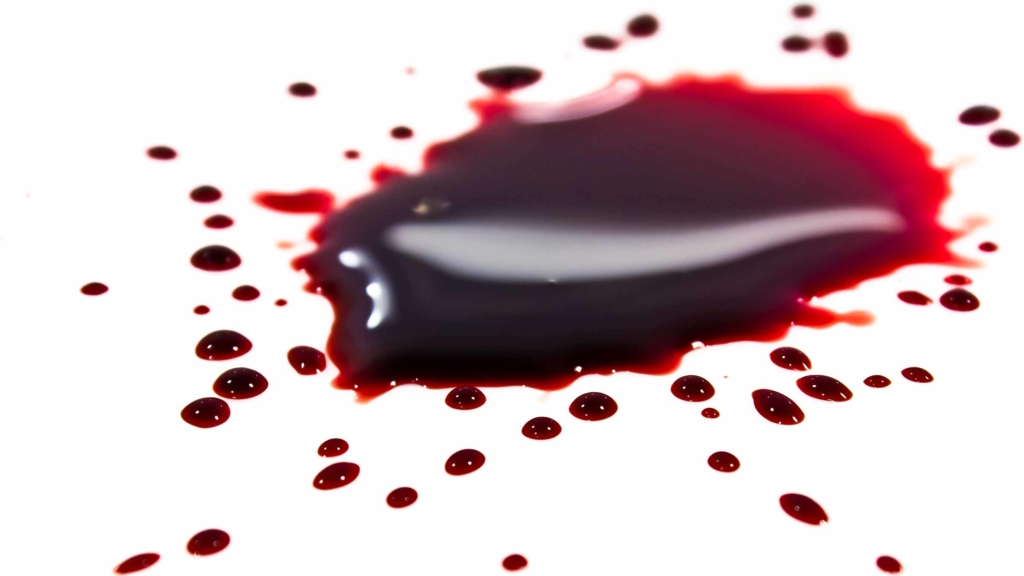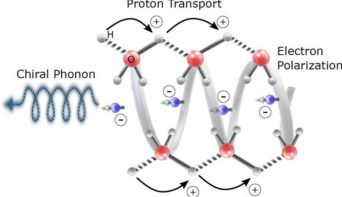Analysing the blood stains following a shooting can be key to finding the perpetrator, but it’s a field of forensics that is being called into question. Sidney Perkowitz explains how understanding the physics behind the blood distribution could help uncover the truth
Joe Bryan, once a popular and respected high-school principal in a small Texas town, has been in prison for over 30 years. He is serving a 99-year sentence for the shooting and murder of his wife in 1985. The evidence incriminating him involved spots of the victim’s blood found on a hand-held torch. A witness, who was rated as expert in the forensic technique of blood pattern analysis (BPA), interpreted these spots as placing Bryan near his wife when she was shot – a testimony that was at the forefront of Bryan’s conviction. It overrode countervailing evidence that he was in fact at a conference 120 miles away – an alibi that made it nearly impossible for him to have shot his wife, as he would have had to leave the event, travel home, commit murder and return to the conference within a specific timeframe. Bryan maintains his innocence to this day.
Evidence like this, based on the physical behaviour of the blood generated at a crime scene, has roots in late 19th-century Europe. It became prominent in the US during the famous Sam Sheppard murder trial in 1955, and has played an important role in other murder trials since – including those of football player and actor O J Simpson (1994–1995, verdict of not guilty) and music producer Phil Spector (2007–2009, retrial verdict of guilty).
Police investigators use BPA to work backwards from blood traces at a crime scene, allowing them to reconstruct the locations and actions of the people and weapons involved. The traces include drips, smears and spatters, which are created when drops of blood radiate from the impact of a bullet or blunt instrument until they encounter a surface and stain it. But according to a startling 2009 report from the US National Academy of Sciences (NAS) that still resonates today, BPA lacks scientific rigour and valid accreditation for its practitioners. This is a serious concern because BPA results have convicted people later shown to be innocent, as many believe Bryan to be; and because lack of confidence in BPA analysis may allow the guilty to go free. As a result, it has become essential to re-assess the physics behind BPA.
Although the US leads the world in gun ownership – there are 120 guns per 100 people, and 64% of US homicides are gun-related – other countries have many shootings too. For instance, 30% of homicides in Canada involve guns, while a dozen nations, including Brazil, exceed the US in their rate of gun deaths per 100,000 people. Establishing the scientific validity of BPA could therefore have an international impact on dealing with the world’s 250,000 annual gun-related deaths by helping to categorize them as homicides or suicides – and, in the former case, potentially bringing the perpetrators to justice.
Bloody behaviour
In terms of physics, BPA reconstruction is a complicated problem in fluid mechanics that involves tracing the behaviour of blood, under various forces and ambient conditions. The challenge is made more difficult because blood is a complex fluid containing both liquid (the plasma) and solid (the blood cells) components. Furthermore, the properties of blood – such as its pH or the number of red blood cells – vary from person to person.
But this work is more than just an academic exercise. It can also have real effects, according to Alicia Carriquiry at Iowa State University in the US. As a statistician and director of the Center for Statistics and Applications in Forensic Evidence (CSAFE) – which is funded by the US National Institute of Standards and Technology (NIST) – Carriquiry has a broad view of forensic science. “BPA is one of those areas in which science has a lot to say,” she says. “As opposed to other forensic disciplines, in BPA we actually have physical and fluid-dynamical models that can help answer questions such as those having to do with trajectory, point of origin and similar.”
Fundamental science has, however, not been well applied to BPA, according to the 2009 NAS report, which was entitled Strengthening Forensic Science in the United States. Co-chaired by a distinguished US federal judge and an academic statistician, it included contributors from relevant scientific disciplines including physics. In general, except for DNA analysis, the report found deficiencies in virtually every forensic technique – including the analysis of hair, fibres, fingerprints and bite marks. “The interpretation of forensic evidence is not always based on scientific studies to determine its validity,” it stated. “This is a serious problem.” A separate report in 2016 from the US president’s Council of Advisors on Science and Technology – written by the director of the Office of Science and Technology Policy together with a panel of scientists – echoed this critique.
For BPA in particular, the NAS report noted the complexities of fluid dynamics and indicated that BPA analysts should understand the physics involved. But with no strict educational requirements for certification as a BPA expert – they’re trained only to follow packaged procedures – the report concluded that “The opinions of bloodstain pattern analysts are more subjective than scientific…The uncertainties associated with [BPA] are enormous.” In 2018 the Texas Forensic Science Commission reached similar conclusions about the Bryan case, calling the interpretation of the BPA evidence “inaccurate” and “scientifically unsupportable”.
Still, properly used, BPA can give valuable clues towards understanding the circumstances of a shooting. For example, drops of blood that strike the floor at an angle will create a set of elliptical stains, whose width-to-length ratio gives the impact angle (figure 1). BPA analysts are trained to draw straight-line trajectories that follow the long dimension of each ellipse at that impact angle. These paths converge, providing a position from which the blood originated. While this correctly gives the projection onto the floor of the location of a gunshot wound, the straight-line procedure overestimates the height of the wound, since the true paths under gravity are parabolas modified by aerodynamic drag. The error is typically large enough to wrongly place a victim as standing rather than sitting.
1 Geometry of blood spatter
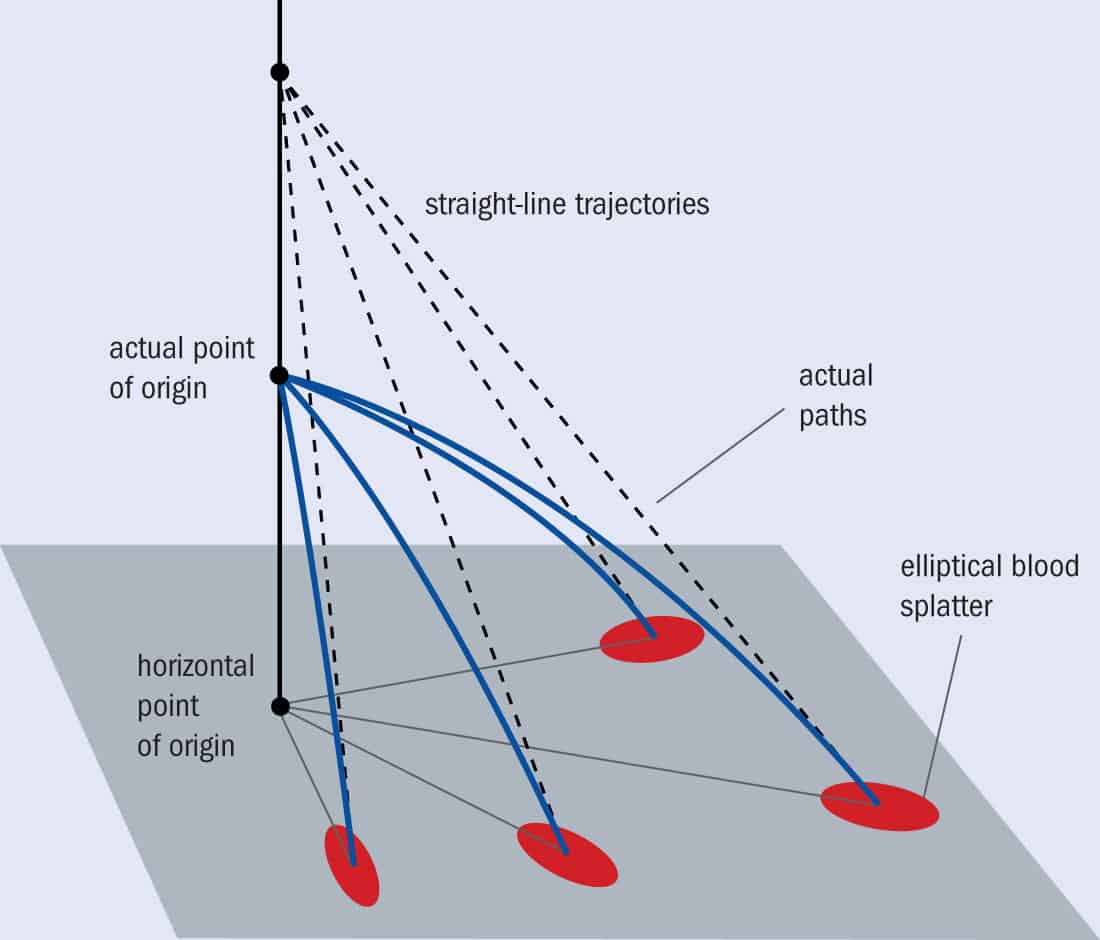 When drops of blood hit the floor at an angle, they produce elliptical stains, where their width-to-length ratio gives that impact angle. Traditionally practitioners of blood-pattern analysis trace a straight-line from the stain at the impact angle to reveal where the blood originated. While this correctly maps the paths along the floor (grey lines), straight-line trajectories (dashed lines) overestimate the vertical height of the impact because the blood would have taken a modified parabolic path (blue) due to gravity and drag.
When drops of blood hit the floor at an angle, they produce elliptical stains, where their width-to-length ratio gives that impact angle. Traditionally practitioners of blood-pattern analysis trace a straight-line from the stain at the impact angle to reveal where the blood originated. While this correctly maps the paths along the floor (grey lines), straight-line trajectories (dashed lines) overestimate the vertical height of the impact because the blood would have taken a modified parabolic path (blue) due to gravity and drag.
This is one of the established BPA methods that deeper physical analysis can improve. In 2011 physicists Christopher Varney and Fred Gittes at Washington State University put the projectile-motion equations, including gravity and drag, into a form that uses all the data inherent in a set of spatter bloodstains (Am. J. Phys. 79 838). They found that a plot of the impact angles for the stains versus the inverse of their horizontal distances from the vertical axis of impact gives a valid result for the height, provided that the launch angles for the drops are not too widely distributed. In a test that spattered a viscous blood substitute, the researchers used this approach to calculate the actual launch height of 88 cm to within 8%. For comparison, the linear trajectories overestimated the launch height by 100%.
In 2015 Nick Laan, of the University of Amsterdam and the Netherlands Forensics Institute, and colleagues instead used the fluid qualities of blood to find the height of a gunshot wound (Scientific Reports 5 11461). Earlier work had derived an equation relating the impact velocity of a liquid drop of blood to its volume and impact angle, and to the width of the dried stain it produced as determined by the known capillary and viscous behaviour of blood. To apply this method, the researchers created spatter patterns of human blood under controlled conditions. For each of 40 separate blood stains, they determined its width and impact angle, and, using a commercial 3D surface scanner, measured the volume of the stain, from which they found the volume of the original drop. These parameters yielded the impact velocity, giving enough information to solve the equations of motion under gravity with aerodynamic drag. The results for the height where each drop originated had an average value of 58.5 cm, only 8% below the true height of 63.7 cm. Meanwhile, the straight-line method gave 91.1 cm – a much larger 42% error.
A bullet’s journey
These two papers and others analyse the behaviour of blood drops after they have been formed, to enhance standard BPA. But mechanical engineers and fluid dynamicists Alexander Yarin and Patrick Comiskey from the University of Illinois at Chicago, together with Daniel Attinger at Iowa State, have gone further. They have modelled the entire process from the bullet entering the body to the final blood stain pattern.
Since 2016 these researchers have developed fluid dynamical theories for gunshot back spatter and forward spatter, where blood drops travel respectively against and with the direction of the bullet and display different characteristics. The back-spatter analysis – carried out for both regular (Phys. Rev. Fluids 1 043201) and blunt-nosed (Phys. Rev. Fluids 2 073906) bullets – is based on the well-known Rayleigh–Taylor instability. In this effect, acceleration perpendicular to the interface between two fluids of different densities – here, blood and air – creates growing turbulence and mixing between the fluids. (One remarkable example of the instability is the spectacular filaments seen in the expanding Crab Nebula, where the two fluids comprise material ejected by the Crab’s initial supernova explosion, and a plasma of relativistic charged particles powered by the Crab’s central pulsar.) Meanwhile, forward spatter, caused when the bullet exits a body after multiple disruptive encounters with blood and tissue, was treated differently. Its analysis used percolation theory, which describes available paths through randomly arranged clusters.
For both kinds of spatter, the researchers calculated the numbers, sizes and dynamical properties of the drops of blood generated by a bullet; then determined their trajectories under gravity and aerodynamic drag. Finally, the team found the number of resulting stains, their areas, impact angles and distribution with respect to distance (figure 2).
2 Shortfalls with blood pattern analysis
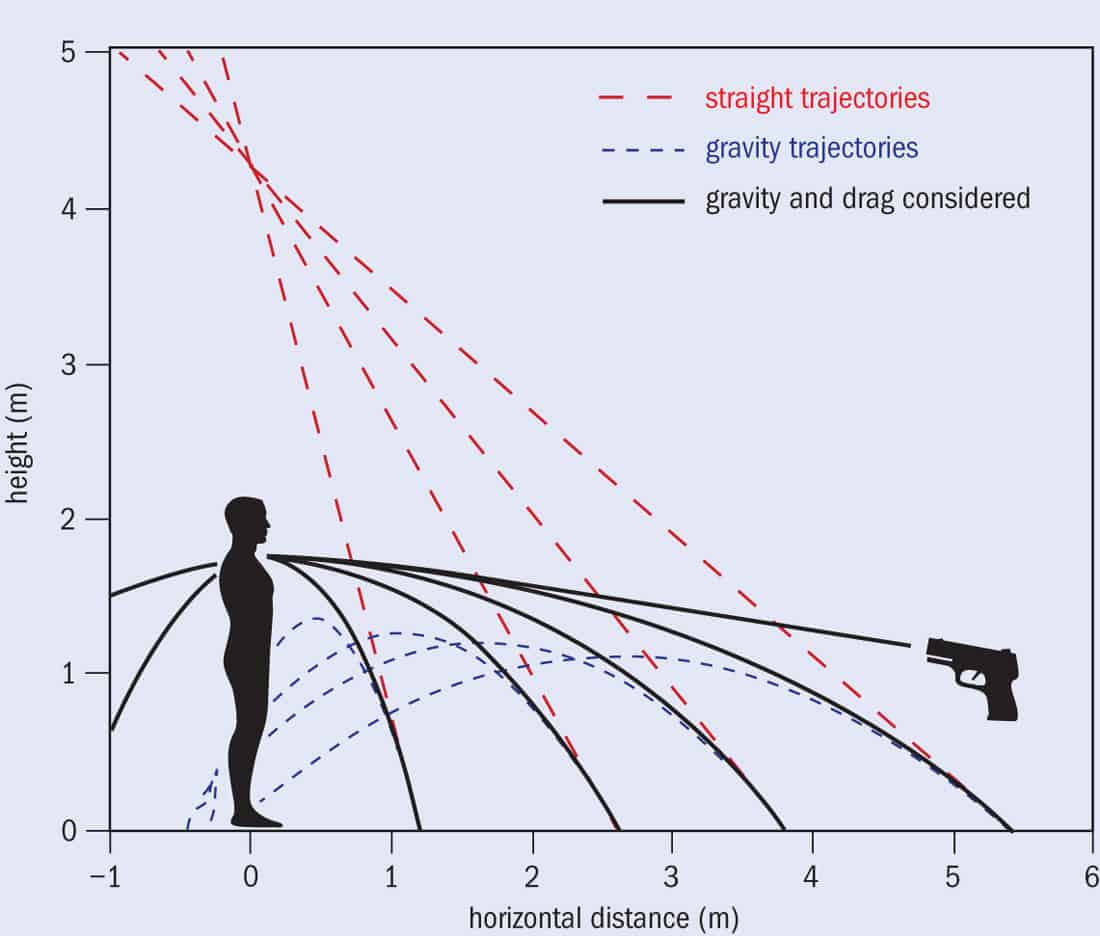 This diagram demonstrates three possible trajectories that could be mapped from back-spatter blood stains depending on what phenomena are taken into account. Straight-line paths (red), which do not account for gravity and drag, overestimate the height of impact. When drag is not considered (blue) the paths fall short. BPA needs to take into account both gravity and drag (black) to get a more accurate estimate of where the bullet impacted.
This diagram demonstrates three possible trajectories that could be mapped from back-spatter blood stains depending on what phenomena are taken into account. Straight-line paths (red), which do not account for gravity and drag, overestimate the height of impact. When drag is not considered (blue) the paths fall short. BPA needs to take into account both gravity and drag (black) to get a more accurate estimate of where the bullet impacted.
These calculated results for the blood-spatter distributions agree reasonably well with data obtained by shooting bullets into sponges or plastic foam soaked with swine blood for back spatter, and through a blood-filled reservoir for forward spatter. Although the researchers note that more experiments are needed, their results are significant steps toward a real, physics-based theory of spattering. Their work also points to new directions for study, such as how air is carried along with drops of blood in flight, which influences their trajectories, and the impact of temperature on blood viscosity.
The theoretical results so far show the value of the fluid dynamics approach but also that its complexity can add uncertainties to the analysis, for example through the variable properties of blood and blood stains. Besides temperature, the viscosity of blood also depends on the percentage of red blood cells, which varies by individual and could affect approaches like that used by Laan and colleagues. What’s more, the properties of the surface that a blood drop strikes may modify how it spreads and therefore affect the stain it leaves. Confounding elements like these should be taken into account for fully valid BPA that carries weight in court, and may limit claims about what BPA can definitively show. Certainly, there is much left to do.
From lab to crime scene
As the science of BPA progresses, a parallel challenge is to convert its results into new, practical and transparent procedures for murder investigations and courtroom presentations. But BPA practitioners have not entirely welcomed these changes, which threaten to upset established field procedures, a reaction also found elsewhere in the forensics establishment. Nevertheless, says Carriquiry, for many topics in forensic science “we have managed to make important inroads and established some meaningful partnerships with forensic practitioners who see our work as a means to make theirs more objective and ‘scientific’ ”. These partners include the Houston Forensic Science Center and the Los Angeles Police Department.
Now, with support from CSAFE and other US federal agencies, researchers are working specifically to strengthen connections between the BPA and fluid dynamics communities, and to provide practitioners with useful results. For example, Attinger and co-authors have written a tutorial paper in which they discuss the forces at play in fluid dynamics and how they determine the behaviour of blood drops at a crime scene (Forensic Science International 231 375). Attinger has also published charts based on fluid dynamics that make it simple for investigators in the field to estimate the maximum distance that a blood drop has travelled (Forensic Science International 298 97).
3 Blood and bullets in a lab

An example of blood back spatter on a card target, produced by researchers at Iowa State University using the set-up shown in figure 4. The bullet hole can be seen in the top left of the middle image.
In another effort, Attinger’s team has published back-spatter patterns of human blood produced in the lab by gunshot (figure 3), with rigorous control of the firearms and ammunition used and the physical arrangement (Data in Brief 22 269); and a second set of blood patterns produced by blunt instruments (Data in Brief 18 648). These provide high-resolution images of blood stains generated under varied conditions, for training and research use (figure 4). In one project, Hal Stern at the University of California–Irvine, a statistician and co-director of CSAFE, is examining the images for distinctive features that practitioners could use to distinguish among possible sources for observed spatters. In other outreach, BPA researchers also present talks and training sessions at professional societies.
4 A staged scene
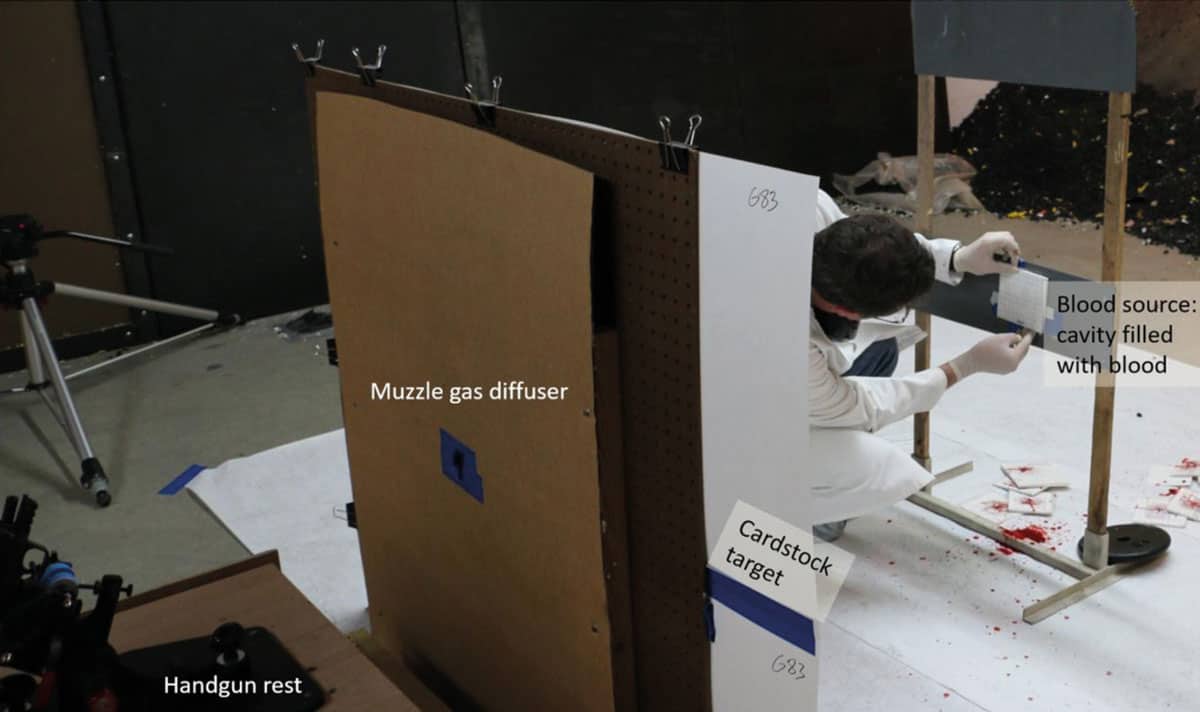
The experimental set-up used by Daniel Attinger and colleagues in Iowa to study back-spatter blood stains.
Unfortunately, widespread adoption of more rigorous BPA practice and training will not come quickly, or automatically erase past deficiencies that produced unreliable evidence and false accusations. Nor is it likely that the legal standards for acceptance of BPA evidence will change soon enough to affect Joe Bryan’s upcoming appeal for a new trial. That request was denied in 2018, but his lawyers are now preparing a last-ditch effort before the Texas Court of Criminal Appeals. However, Bryan is nearly 80. Even if a new trial is approved, it may not come in time to do him any good.
Whatever that outcome, the extensive coverage of the Bryan case along with the NAS report and other evaluations of BPA have uncovered its problems and motivated progress toward a better physics of blood patterns. This may at least ensure that future blood evidence will be more effective in identifying the true perpetrators without unjustly condemning people who are innocent.
